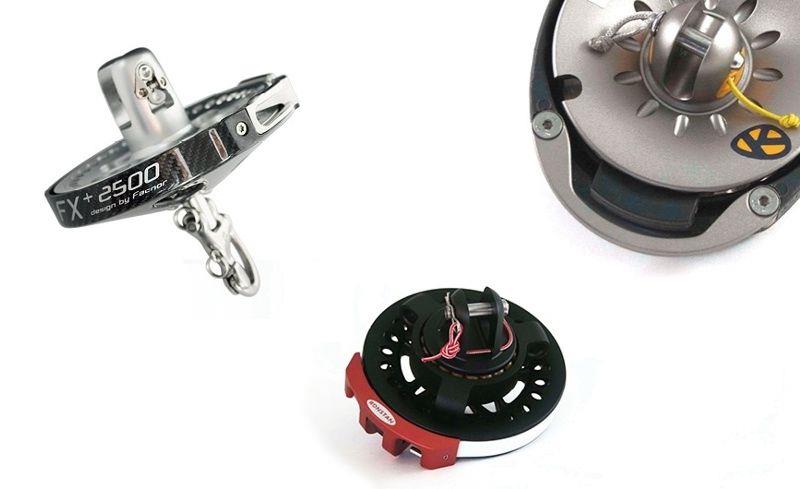
Top-down and Bottom-up Furling Units: Differences and Options
by Phil Anniss 28 Dec 2018 01:00 PST

Top-down and Bottom-up Furling Units: Differences and Options © upffront.com
What are the key differences between bottom-up and top-down furling units and do I need a dedicated unit for each type of furling?
For a definition of the expressions, "top-down" and "bottom-up" furling - please read our related blog article.
Dedicated top-down unit
The primary difference between a bottom-up and a dedicated top-down furling drum is that a top-down drum has the addition of a free floating tack swivel mounted on the furling drum. When the drum is furled, the fork and cable are rotated whilst the tack swivel remains static. This allows the torque to be transmitted along the full length of the cable to the head of the sail where the furl starts. With the free floating gennaker tack, the bottom of the sail is then the last part to be furled around the torsional cable.
A top-down drum is heavier than its bottom-up counterpart due to the addition of this tack swivel. It should be noted that some manufacturers specify a separate working load for the tack swivel. For example: the Karver KSF8 and KSF8R top-down furling units essentially have the same overall Safe Working Load (SWL) of 8T, but they have tack swivel SWL's of 3T and 6T respectively. Having said that, with top-down furling, SWL is rarely an issue because the cable is only tensioned during furling and unfurling and even then, with just enough load to hold the cable straight during the furl rather than under serious tension.
Note: a top-down furler can be used as a standard bottom-up furler, it is just the tack swivel becomes superfluous.
Other options?
Cruising
Furling units are a reasonable investment and so most will be pleased to hear that there are some options, other than buying a dedicated top-down furling drum.
Most common of these, and popular amongst cruising sailors, is to use a top-down adapter. This is a stand-alone tack swivel that has an eye to connect into a standard bottom-up furling drum with an upper fork into which the torsional cable is connected.
The top-down adapter can be set up and left permanently on the sail, with the cable connected and tack lashing in place. With a swivel similarly dedicated and stowed with the sail, when it comes time to hoist your gennaker, simply attach the top-down in the jaw of the drum, attached the halyard to the swivel and hoist out of the bag.
The only disadvantages with the top-down adapter are the significant increase in weight, over a dedicated top-down drum, and a slight decrease in available luff length. However for most cruising sailors the advantages of using a single drum for both their code zero and downwind gennakers outweighs the disadvantages.
Racing
Another, slightly more complicated, option is used on a number of big boats, with the crew and brain-power to pull it off! In reality, the tack of the gennaker can be completely independent to the furling drum. Some boats set up a 2:1 gennaker tack line directly onto a padeye on the deck, close to the drum. For the hoist, the swivel is attached to the halyard, the bottom of the torsional cable to the fork in the drum and then the tack to the line onto the deck.
The advantages of this setup are that it is the lightest option and it allows the crew to quickly and easily adjust the luff tension on the gennaker. The downside is that you do need to ensure the tackline trimmer is paying attention during the furl/unfurl manoeuvres.
Summary of available options:
- Separate, dedicated bottom-up and top-down furling units
- Use a top-down adapter on each of your gennakers together with a single, standard bottom-up furler
- Heavy, but a very flexible and efficient cruising set-up
- Use a dedicated top-down furler for both bottom-up and top-down furling
- Slow sail changes but otherwise perfectly acceptable
- Use a bottom-up drum with a separate gennaker tack line
- Need to have experienced crew
To get a complete guide to specifying and purchasing continuous line furling systems please download our Furling System Guide.